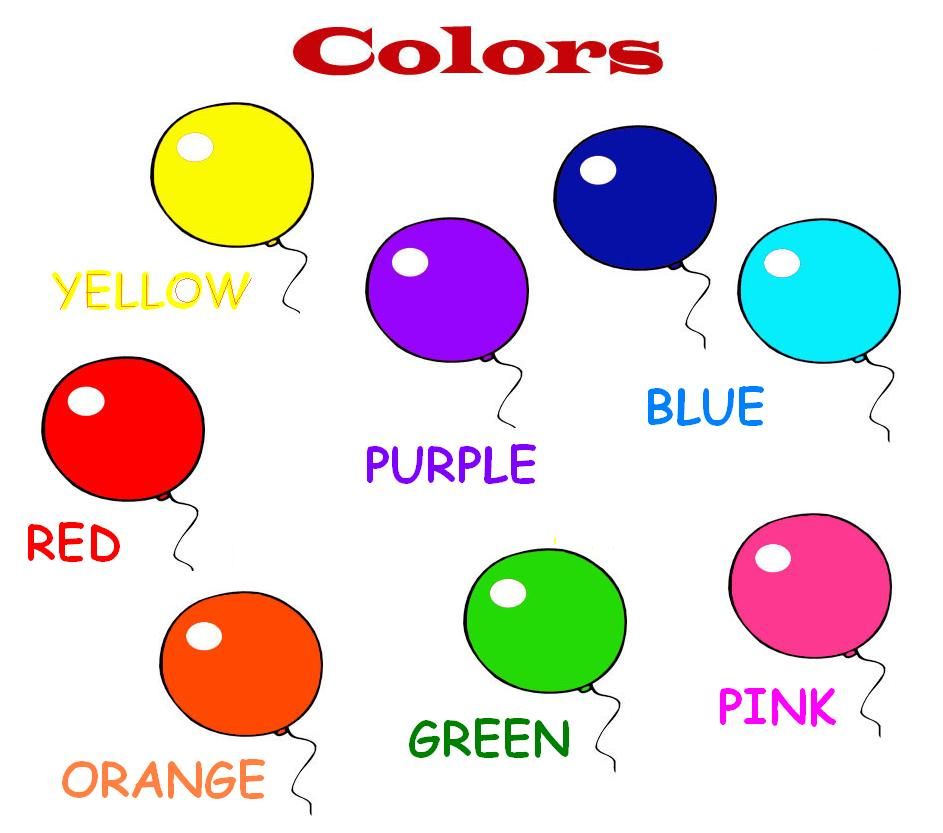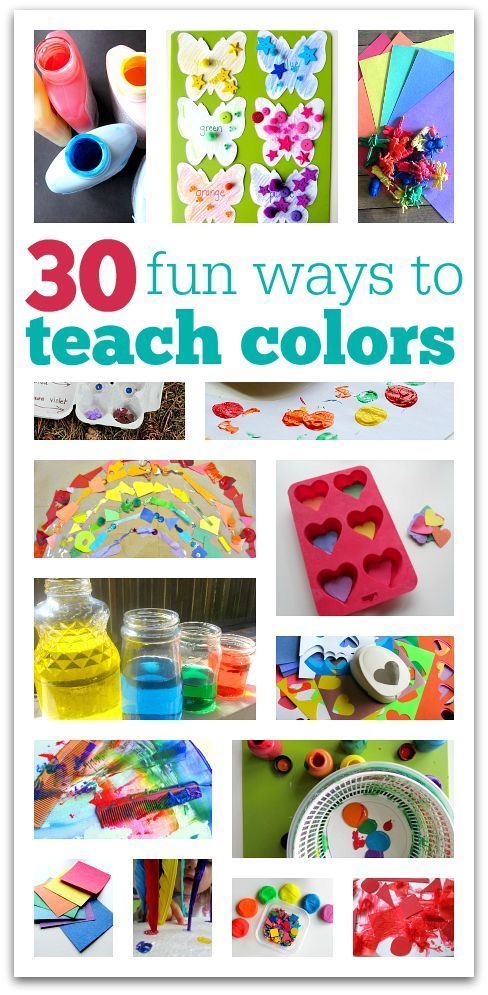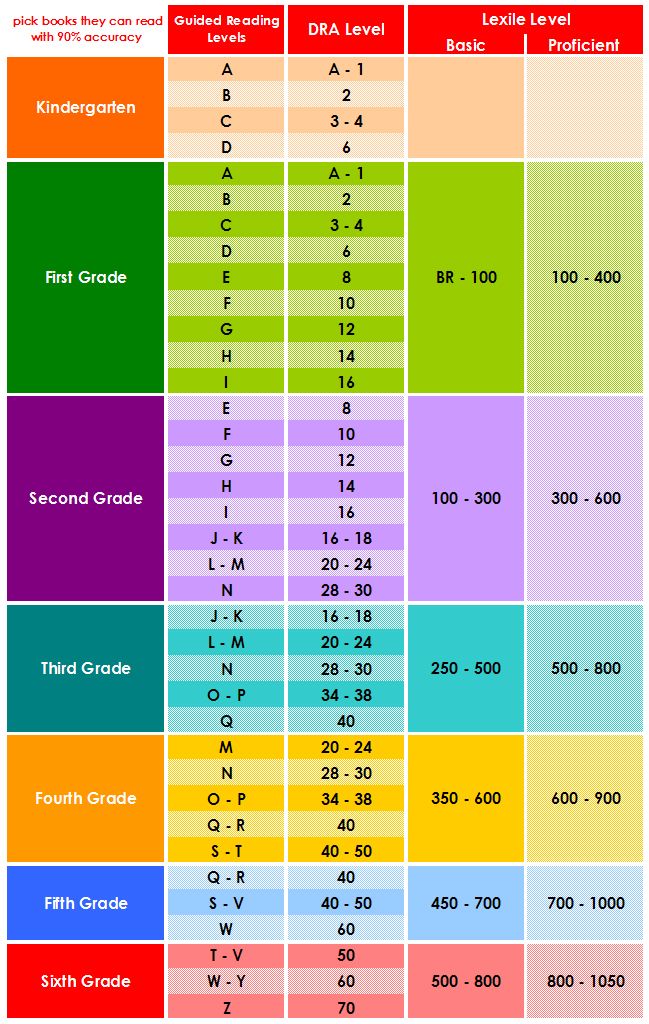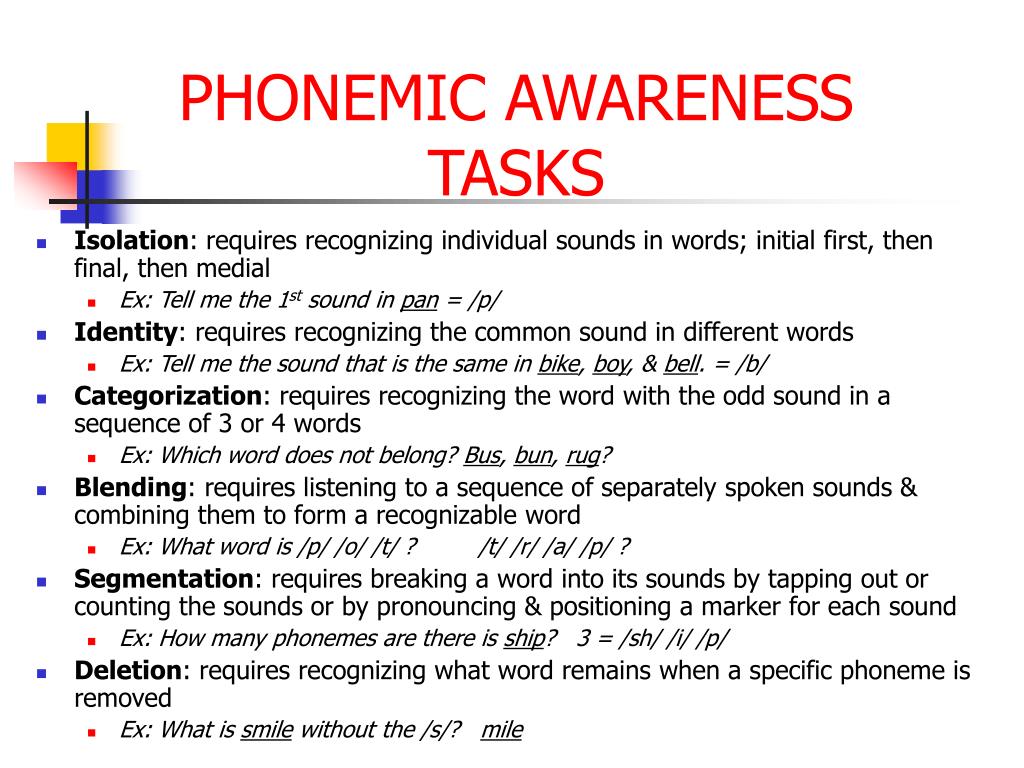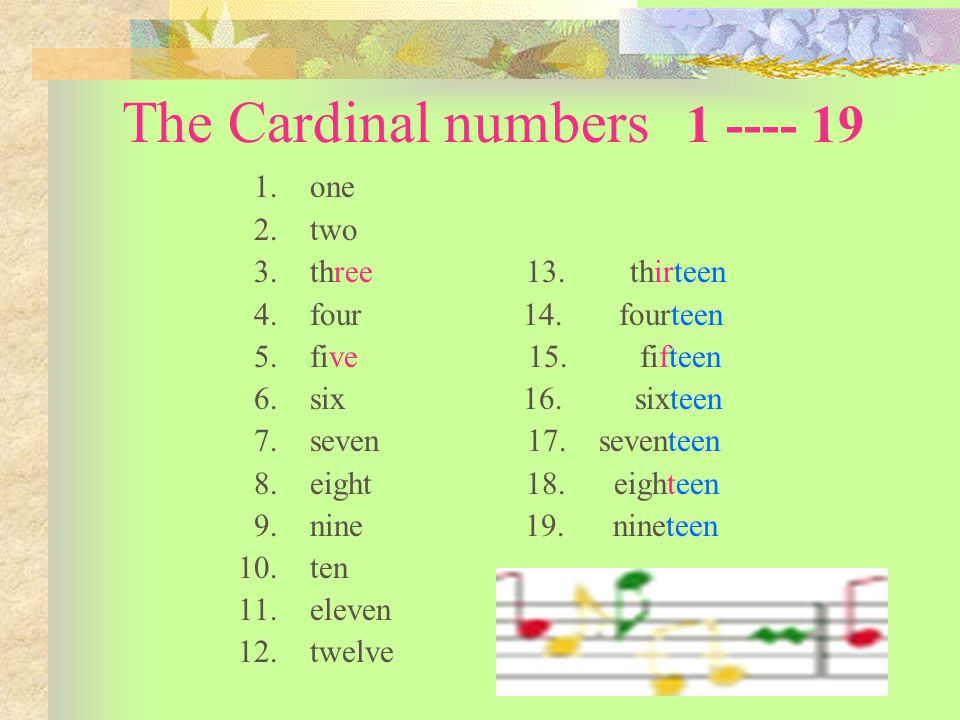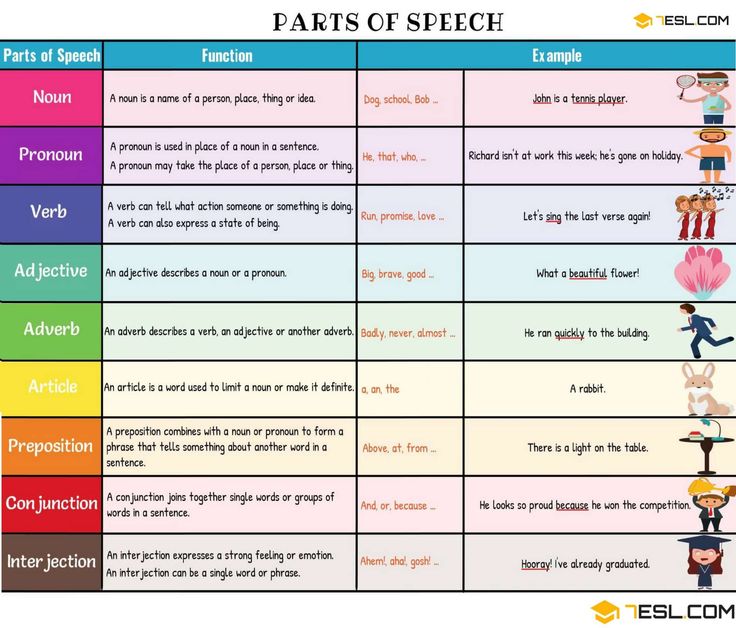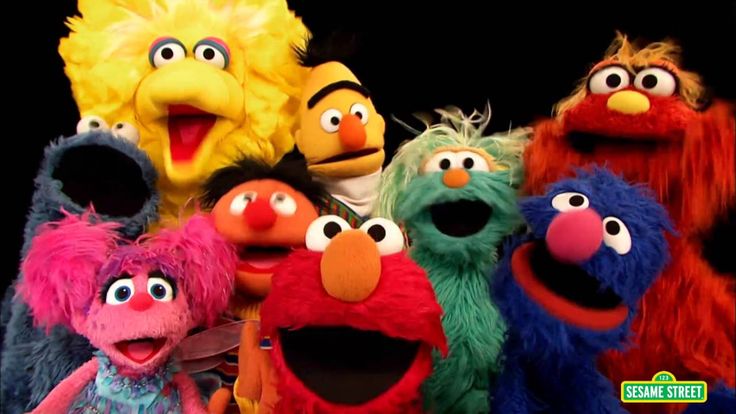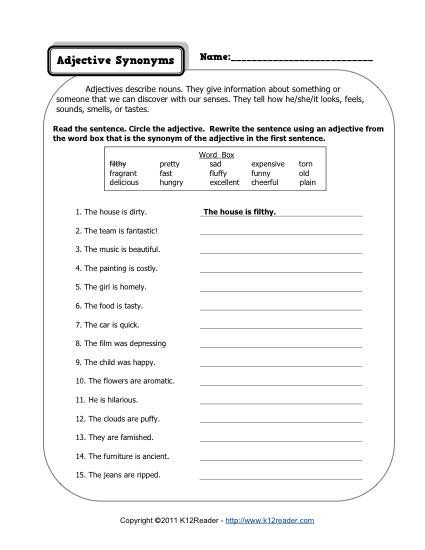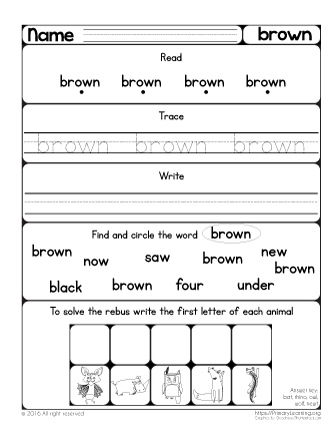Color learning for child
Colors for Kids: Teaching Colors to Children
Children usually learn about color during their preschool years. The ability to identify colors is considered a marker and milestone in a child’s cognitive process and is often part of early screening for development and educational admittance. Recognizing the colors and identifying the color names is an important part of a child’s development. Early identification of colors helps to create the cognitive link between visual clues and words.
Tips on Teaching Children Colors
Children need to first acquire informational pieces before they can begin to understand color as a concept. It might seem simple as blue is blue, before the concept of color is understood. Children don’t have the ability to understand that light blue and navy are both blue and they also lack the verbal skills to explain that to you. Along with learning what each color is called, children need to understand what color represents; it’s not size, nor shape, nor the name of the object, nor the texture, not the number of things showing.
Constant repetition and expanding on what colors are and what they are not will help any child understand what the actual word color means.
After that, teaching colors to children is usually easy. Children are naturally attracted to bright colors, which is why most toys and activities geared towards younger children, including toddlers and babies, are brightly colored. During the preschool years, children have a natural affinity to understand their world around them. Surrounded by a world of color it is easy to use daily opportunities to discuss colors. Of course, since teaching color recognition to children is so important, there are many tools that can be used by parents and educators alike to help children learn about color.
Learning About Colors Through Children’s Books
There are numerous children’s books to teach children about color form. The “chunky books” such as the “Happy Baby” series that usually mark a baby’s first “reading” experience, are books that are very educationally minded. Like toys geared for children, children’s books are a natural opportunity to not only teach children the differences between the colors and to identify them, but to also forget that connection between the written words and the colors they represent. The best children’s books to teach color combine a child’s interest, with a great story, and colorful illustrations making reading experience completely enjoyable. Children’s Book Guide.com has a great list of children’s books that will provide many opportunities for parents and educators to teach color to children without them even realizing that a lesson is at hand.
Like toys geared for children, children’s books are a natural opportunity to not only teach children the differences between the colors and to identify them, but to also forget that connection between the written words and the colors they represent. The best children’s books to teach color combine a child’s interest, with a great story, and colorful illustrations making reading experience completely enjoyable. Children’s Book Guide.com has a great list of children’s books that will provide many opportunities for parents and educators to teach color to children without them even realizing that a lesson is at hand.
One of our favorites from the list is Eric Carles’ “Brown Bear, Brown Bear, What Do You See” Considered a staple in many a preschool classroom, this classic has been a must have for children learning about color since its publication as Carle’s first illustrated children’s book in 1967. Republished in 2007, “Brown Bear, Brown Bear, What Do You See” is not the only one of Carle’s books that can be used to teach children colors.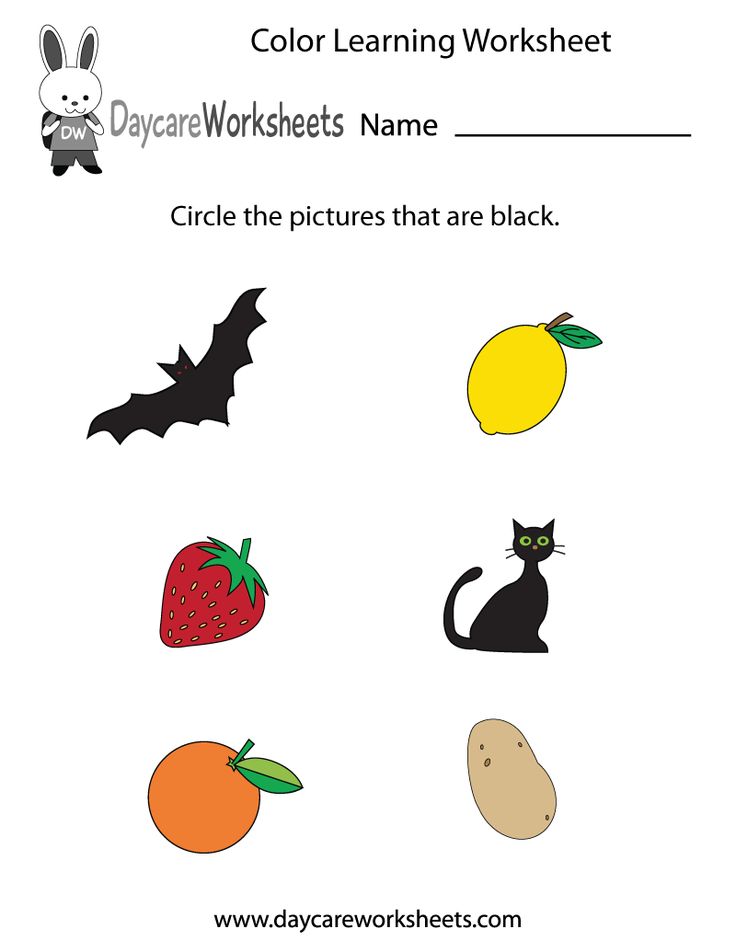 Known for his creative use of collage in his illustrations, Carle’s books go past a more generic use of flat colors, and allow children to experience nuance, patterns and a range of shades all in one color.
Known for his creative use of collage in his illustrations, Carle’s books go past a more generic use of flat colors, and allow children to experience nuance, patterns and a range of shades all in one color.
Games that Teach Children About Color
Along with books, many games use color in part to make them attractive to children while teaching them about color.
The classic children’s game, Candyland, is often a child’s first board game because of its use of color. Naturally appealing with its sugar coated fantasy, the board game doesn’t use a counter or dice, but color cards that dictate the child’s next move on the board. Along with color matching, Candyland also teaches counting skills, strategy, social skills and spatial reason to young children.
Color matching memory games are another way to induced color learning to children with a game. Based off the typical matching game of remembering where two like cards are to make a pair, preschool children have to compare colors and match the same ones together to win. Another game geared towards teaching child to match colors is dominoes. By removing the dots that require counting and increasing the size, Jumbo Color Dominoes.
Another game geared towards teaching child to match colors is dominoes. By removing the dots that require counting and increasing the size, Jumbo Color Dominoes.
Children Learning with Colors Flashcards
Since learning colors is such an important part of every child’s early education, schools and parents often turn to the more educational minded color flashcards. Color flashcards run a range from just focusing on color to inducing the words along with color as pre reading skills. Often color flashcards use shapes and teach basic counting skills along with color recognition. There are many different kinds of flashcards geared towards teaching children about color. They can be purchased directly, downloaded and printed form online sources, or crafty parents can even make their own with color card stock.
Teaching Kids Color Online:
While so many of the tools used to teach children about colors are “classic” the internet and online games have also provided excellent opportunities for children to learn about colors.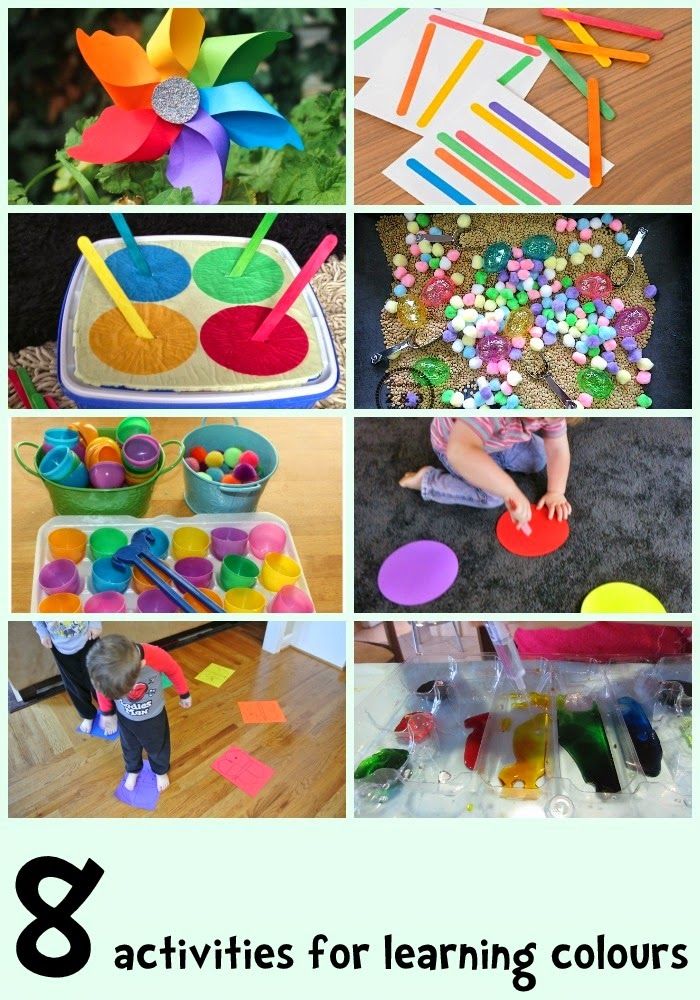 Some online color education tools focus on specific color skill like color recognition, matching and color concentration and might require the child to have some reading ability. Other’s such as Fishers Price’s Color and Shape game plays more like an interactive video and requires the very basic computer skills.
Some online color education tools focus on specific color skill like color recognition, matching and color concentration and might require the child to have some reading ability. Other’s such as Fishers Price’s Color and Shape game plays more like an interactive video and requires the very basic computer skills.
Teaching Color to Children Everyday
Of course, since color is a part of everyday life, there are many opportunities to teach children about color during every day living. One way to teach children about color is to pick a new color each week and completely focus on that color with your food choices, activities, etc.
So, no matter what color you pick for the week, enjoy bringing the beauty of color to a young person while you teach a child about color. Do you have a favorite book or game that teaches color? We would love to hear your recommendations.
Posted by Albert Munsell.
Why learning colors and shapes is so important for young children
This post may contain affiliate ads at no cost to you.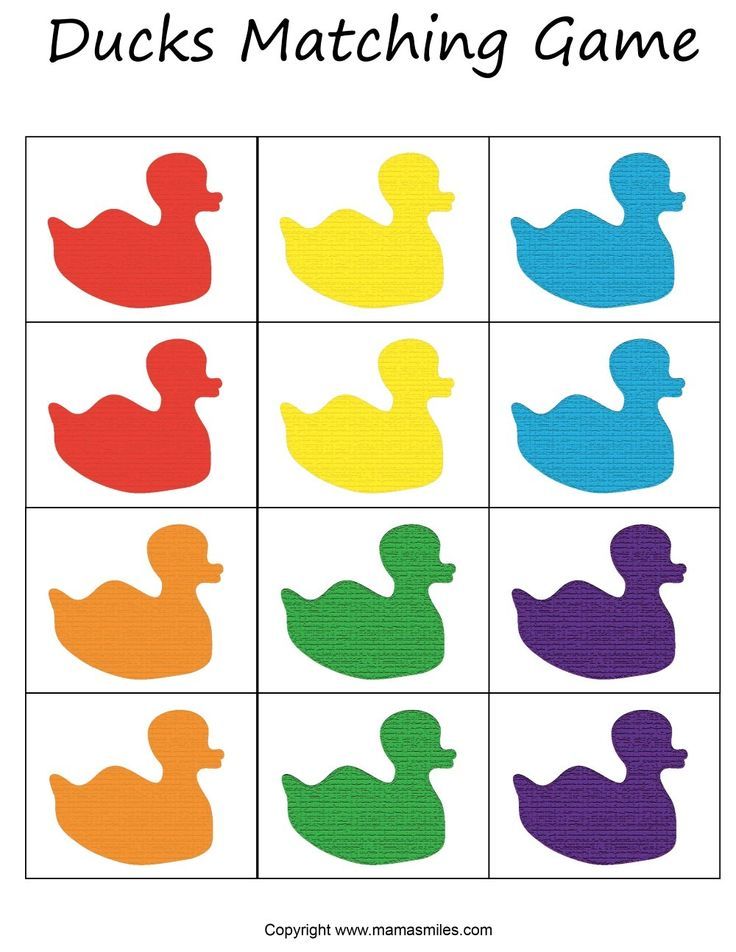 See my disclosures for more information.
See my disclosures for more information.
Do you ever wonder why we put so much emphasis in the toddler and preschool years on teaching colors and shapes? I mean, why put so much focus on colors and shapes rather than letters and numbers?
In this post I explain why learning colors and shapes is so important for young children. I also share plenty of ideas for teaching children to recognize colors and shapes.
For more of ideas to teach colors and shapes, see my Teaching Colors to Kids and my Teaching Shapes to Kids pages.
Colors and Shapes: Foundational Skills for Young Children
So let’s start by stating the fact that our world is literally made up of colors and shapes. That is what we see all around us!
A house has a different shape from a tree, which has a different shape from a person or a banana. And the cars, flowers, and street signs around us come in many different colors.
As it turns out, colors and shapes are a key way that we describe and categorize our world.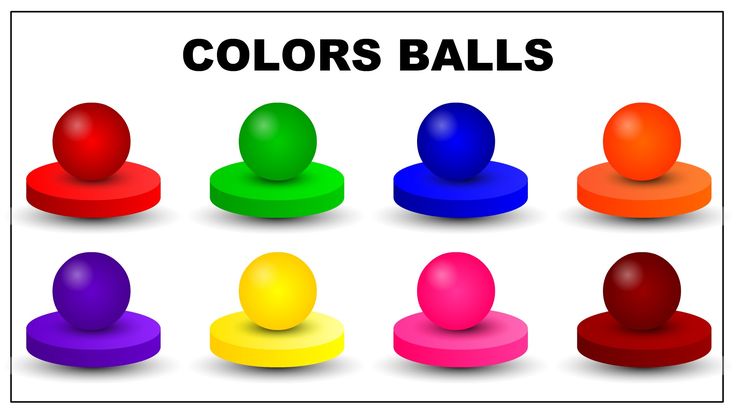 Children will notice that a red flower is different from a yellow one, and that a round bread roll has a different shape than a square slice of bread.
Children will notice that a red flower is different from a yellow one, and that a round bread roll has a different shape than a square slice of bread.
Verbal communication: Teaching children about colors and shapes is a great way to give them some vocabulary for describing the world around them. This opens up new and exciting avenues for verbal communication.
Sorting and classifying: As children learn to identify colors and shapes, they can sort and classify objects around them based on these attributes.
Health and safety: Colors sometimes give us information about health and safety. For example, we use red in our culture to indicate ‘danger’ or ‘stop,’ such as with red stop lights and red stop signs. Colors can also tell us about our health. If a person’s skin has blue marks, it may mean they have suffered a bruise. If a person’s skin turns red, they may have spent too much time in the sun. And black marks on the wall could indicate the presence of an insect, a spider, or even mold.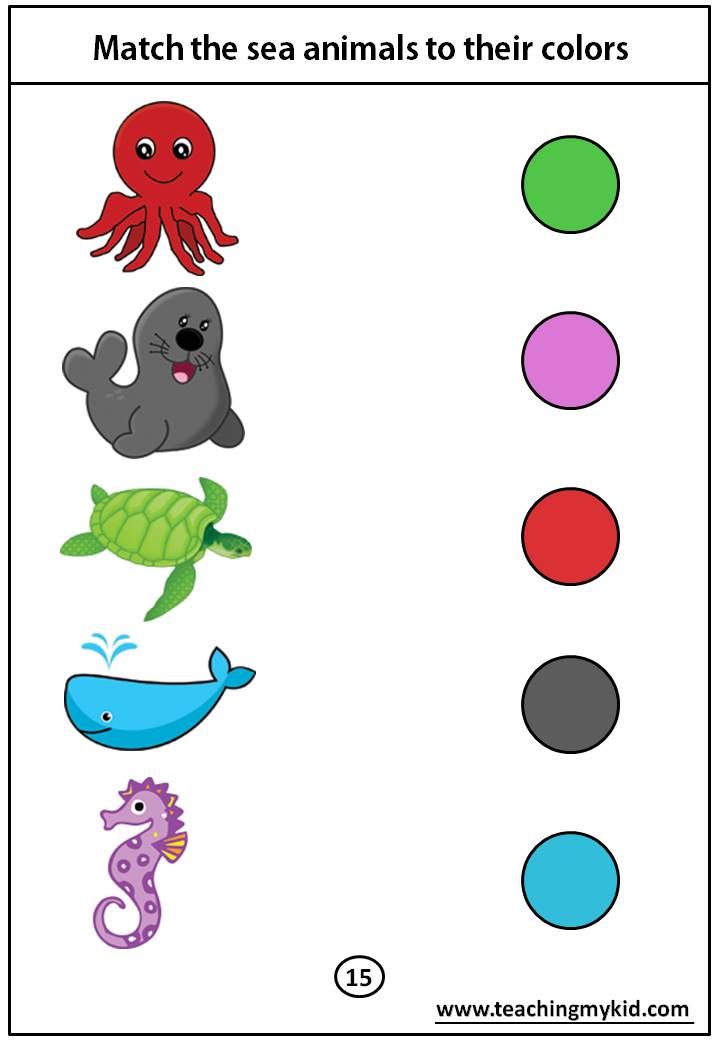
Letters and numbers: The written symbols we use for letters and numbers are really just shapes. As children develop proficiency at learning shapes such as squares and circles, they are developing the classification and visual discrimination skills to distinguish between ‘k’ and ‘x’ or between ‘p’ and ‘g.’
Learning colors
Most children are unable to differentiate between different colors until at least 18 months of age, which is also about the same time that children start to notice differences and similarities between textures, sizes, and shapes. However, while children can start to differentiate between colors around 18 months, it can take until age 3 before children can fully understand the difference between colors and name them.
Although naming colors is second nature to most adults, it is actually a cognitively complex task for young children. This is in part because the range of hues that count as a particular color are not innate, nor are they universal among all cultures.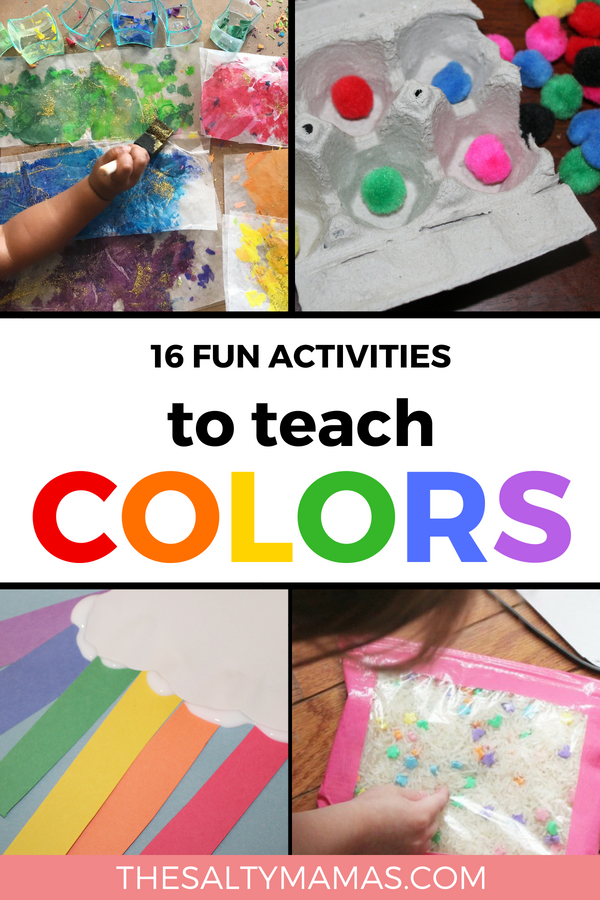 In fact, different cultures and languages around the world vary in the number of distinct colors they recognize, from two colors to more than 20!
In fact, different cultures and languages around the world vary in the number of distinct colors they recognize, from two colors to more than 20!
Teaching colors is best done through playful everyday life experiences. When developmentally ready, many children easily learn their colors as parents and caregivers point out color attributes of objects in children’s environment (e.g., “Throw me the green ball” or “Do you want the red shirt or the yellow shirt?”).
You might also ask your children to match objects by color. Or when doing artwork, make note of the colors the child has chosen to use or ask the child to name the colors in their drawing.
You might also go to the library and borrow books about colors to read to your child.
Here are some links to a variety of ideas for teaching children to identify colors:
- 6 activities for learning about colors
- Teaching colors through everyday play
- Mix it up! Book-based fun with color mixing activity
- Build a 3-D rainbow
- String a rainbow necklace
And for children who can identify the primary colors, these are some fun activities to teach color theory and color mixing:
- Intro to color theory for preschoolers
- Color mixing science with liquid watercolors
- Make your own markers: a practical color mixing lesson
- No mess color mixing activity with plastic bottles
- Color mixing rainbow challenge: Putting color theory into practice
Teaching shapes
It takes most children a few months longer to grasp the concept of shapes than to grasp the concept of color.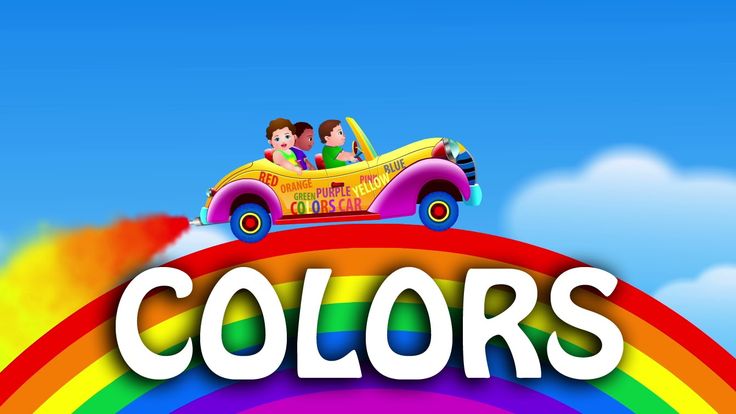 However, by age 3 most children have developed an understanding of shape and can name several of the most common geometric shapes (e.g., circle, square, triangle).
However, by age 3 most children have developed an understanding of shape and can name several of the most common geometric shapes (e.g., circle, square, triangle).
When teaching shapes, start with the most common shapes (squares, triangles, circles, and rectangles) before introducing tricker shapes like diamonds/rhombuses, hexagons, and stars.
It is best if you can teach shapes in a organic ways. Point out that a tire is round like a circle, the television is shaped like a rectangle, and the slice of cheese your child is eating is shaped like a square.
Consider providing your child with toys that teach shapes through playful means.
Over time I have shared a number of activities that can be used to teach shapes. Most of these activities can be adapted to teach either basic shapes (e.g., circle, square, triangle) or more advanced shapes (e.g., ellipse, parallelogram, hexagon).
Here are some links to a variety of ideas for teaching children to identify shapes:
- Books about shapes
- Trace the shapes art project
- Magic disappearing shapes
- Making shapes on the geoboard
- Sand shapes art project
- How many ways to make a shape?
- Gross motor shapes activity
And here are some links to activities for teaching children to recognize 3-dimensional shapes:
- Identifying 3-D shapes by touch
- 3-D shapes graphing game
- Put the clothes on the shape
- Hands-on exploration with 3-D shapes
- Playful ways to learn about 3-D shapes
More resources for teaching colors and shapes
For more activities that teach colors, see my Teaching Colors to Kids page and my Learning Colors Pinterest board.
For more that teach shapes, see my Teaching Shapes to Kids page and my Learning Shapes Pinterest Board.
Learning colors: how to teach a child to distinguish colors and shades
It is generally accepted that by the age of three a child should learn to distinguish between primary colors. This skill is an important part of sensory development, it gives the child the opportunity to see the world in a new way. Often, if the baby does not know or confuse colors, parents have concerns about the pace of development of the child. Do I need to worry if the study of colors is not easy for a child? How to teach a child to distinguish colors? You will find answers to these questions in our article.
At what age does a child begin to see colors?
Studies have shown that children begin to perceive colors by 2-3 months. The first colors a child sees are yellow, orange, red, green. At this age, babies can already react differently to their toys of different colors (for example, a red rattle can please a child more than a blue one), look at bright pictures with enthusiasm. The baby's world quickly acquires colors, but if we talk about the ability to consciously find an object of the right color, then usually it appears in children at the age of one and a half. It is at this age that it is optimal to start learning colors in a playful way. You can voice the names of flowers to a child for up to a year, this will only benefit him. But do not demand too much from the baby, remember that his brain is actively developing, and as soon as the time comes, you will certainly see the results.
The baby's world quickly acquires colors, but if we talk about the ability to consciously find an object of the right color, then usually it appears in children at the age of one and a half. It is at this age that it is optimal to start learning colors in a playful way. You can voice the names of flowers to a child for up to a year, this will only benefit him. But do not demand too much from the baby, remember that his brain is actively developing, and as soon as the time comes, you will certainly see the results.
To see if your child is ready to learn colors by playing with building blocks, ask your child to point to a part that is the same color as yours. If the baby can find objects of the same color, then he is quite ready to memorize the names of colors.
Learning colors in everyday life
Children get most of their knowledge about the world in everyday life: communicating with adults and peers, observing nature, playing. The study of flowers is no exception. Sometimes a child does not need to do special exercises to learn to recognize colors. For this, it is enough that he hears the name of the color and associates it with a specific thing. During daily activities, voice for the child what color the objects are around. Whether you are drawing, playing with blocks, looking at cars in the yard, reading, swimming, eating, dressing - in each of these situations, you can gently teach your child to distinguish colors.
The study of flowers is no exception. Sometimes a child does not need to do special exercises to learn to recognize colors. For this, it is enough that he hears the name of the color and associates it with a specific thing. During daily activities, voice for the child what color the objects are around. Whether you are drawing, playing with blocks, looking at cars in the yard, reading, swimming, eating, dressing - in each of these situations, you can gently teach your child to distinguish colors.
It is important that the study of colors does not turn into torture. You should not constantly test the child's knowledge by asking him which color is which. Soon the baby may just start to ignore you. “Let's paint the sun yellow!”, “What a delicious green cucumber!”, “Oh, where did the blue cube go? Here he is!" are examples of how you can gently help your child remember colors.
Games for learning colors and their shades
In order to get your baby interested in learning colors or to reinforce the knowledge they already have, you can offer your child to play special “color” games.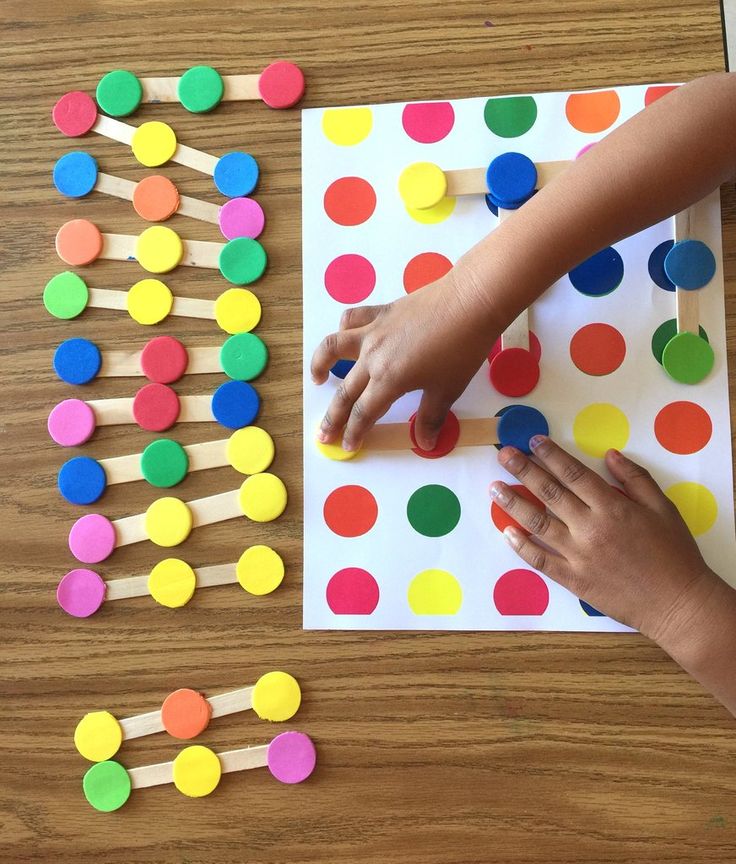
Color Sorting
Sorting games are designed to help children learn to group objects by color. Any materials at hand can be items for sorting: toys, covers, designer parts, cubes, buttons, cereals, pencils, etc. You can organize the game in various ways:
You can come up with as many options for sorting by color, it all depends on your imagination. So that the child does not lose interest in the task, connect the plot of the game with his favorite characters, toys (for example, a cat will eat from a yellow bowl, and a baby elephant from a red one, etc.).
Match a Pair
Help your child learn colors with the Match a Pair series. Ask your child to find a petal for a bug, a pot for a flower, a roof for a house, etc. You can present the baby with a deliberately wrong option and ask to correct the mistakes.
Pick up a patch
Show the child the picture with the missing details.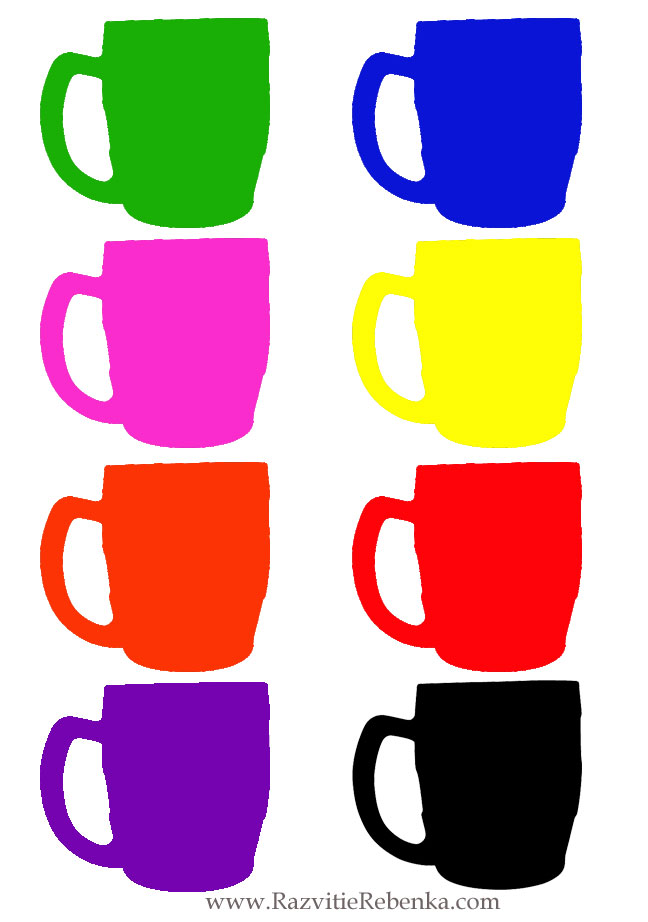 Ask him to fill in the gaps (this can be done with plasticine, pom-poms, caps, cards, etc.).
Ask him to fill in the gaps (this can be done with plasticine, pom-poms, caps, cards, etc.).
Color Lotto
At the age of about one year, children begin to be interested in various lottos. In the color lotto, the task is to collect pictures of the same color on the card.
Colored Sensory Boxes
Create a sensory box for your baby where everything is the same color. During the game, the child will be able not only to remember the color that he sees, but also to develop fine motor skills, tactile sensitivity, thinking, and imagination.
Color days
This is one of the most interesting and popular ways to teach your child to distinguish colors. Its essence is that during the day (or several days) you draw the child's attention to objects of a certain color. For example, on a yellow day, you can dress in yellow clothes, play with yellow toys, draw a yellow chicken. Surrounded by one color, the baby will easily remember it.
Cards for learning colors
You can learn colors with your child using cards. With the help of Doman's "Colors" cards, you can introduce your baby not only to the main colors, but also to different shades. It is important not to overload the child with unnecessary information about the names of 10 shades of green or red. Learn only those shades whose names you can use in the game and life.
Board games for learning colors
Board games are a great way to learn about colors and consolidate knowledge about them. Currently, the stores offer a wide range of similar games for every taste and budget. Choose a game that suits your child.
Educational cartoons
There are many educational cartoons on the Internet that will help your child memorize colors quickly. Here is one of them:
Educational books
If your little one loves to listen to stories and look at pictures, this is the way for you.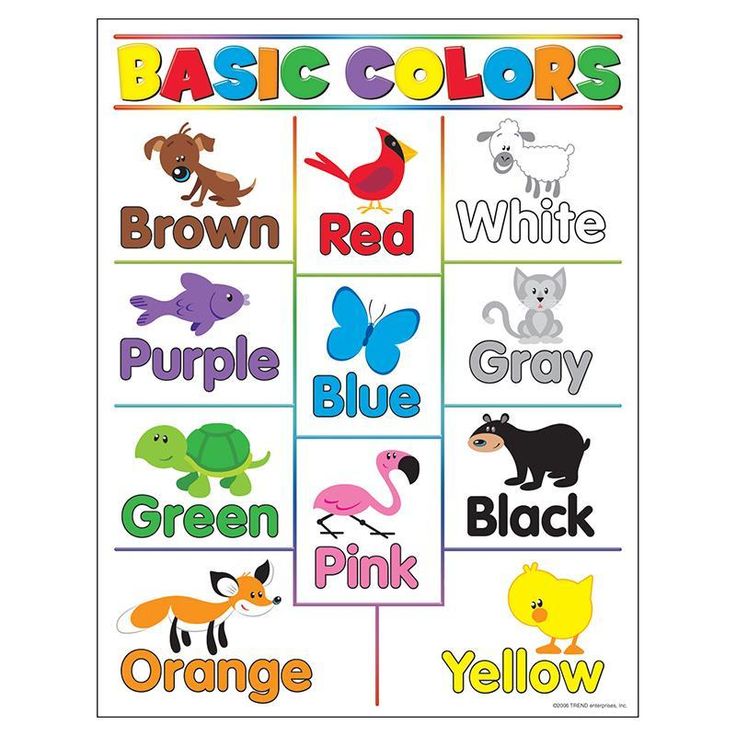 We all remember the wonderful story of V.G. Suteev "Rooster and paints", by S.Ya. Marshak has a whole “Colorful book”. You can also find many educational books that will become your faithful assistants.
We all remember the wonderful story of V.G. Suteev "Rooster and paints", by S.Ya. Marshak has a whole “Colorful book”. You can also find many educational books that will become your faithful assistants.
Conclusions
We have listed for you different color learning games. In order for a child to master the concept of color well, it is worth adhering to a number of principles: do not rush the baby, provide a variety of material for games, discuss what you see.
Conclusion
You can start studying colors from an early age, the main thing is that it is interesting for the child. It is impossible to specify clear age limits when a child should learn primary colors. This process, like all development, is individual for each baby. The Sozvezdie Development Center has created a Montessori environment for kids, aimed at the comprehensive development of the child. In the classes "Together with Mom" children in a playful way get acquainted with the concepts of color, shape and size, do thematic creative work. You can learn from our teachers how to interest a child in an activity and how to properly present him with cognitive information. Develop with us!
You can learn from our teachers how to interest a child in an activity and how to properly present him with cognitive information. Develop with us!
Prepared by a Montessori teacher
Sokolova Oksana
6 techniques from a pediatric ophthalmologist
Contents
- At what age does a child begin to distinguish colors?
- When should I start teaching flowers?
- Step-by-step work
- First introduction to color
- Learning colors in everyday life
- Visual cards "Learning to mix colors"
- Poems about colors with pictures
- Games for learning colors and their shades
- Learn Colors Puzzle Cards
- Exercises for Toddlers
- Activities with an Older Child
- Continuing Learning
- Ways to Learn Colors with a Child
- Method #1 Creativity Finishing the picture”
- Method No. 3. “Playing with an interactive toy”
At what age does a child begin to distinguish colors?
Studies have shown that children begin to perceive colors by 2-3 months.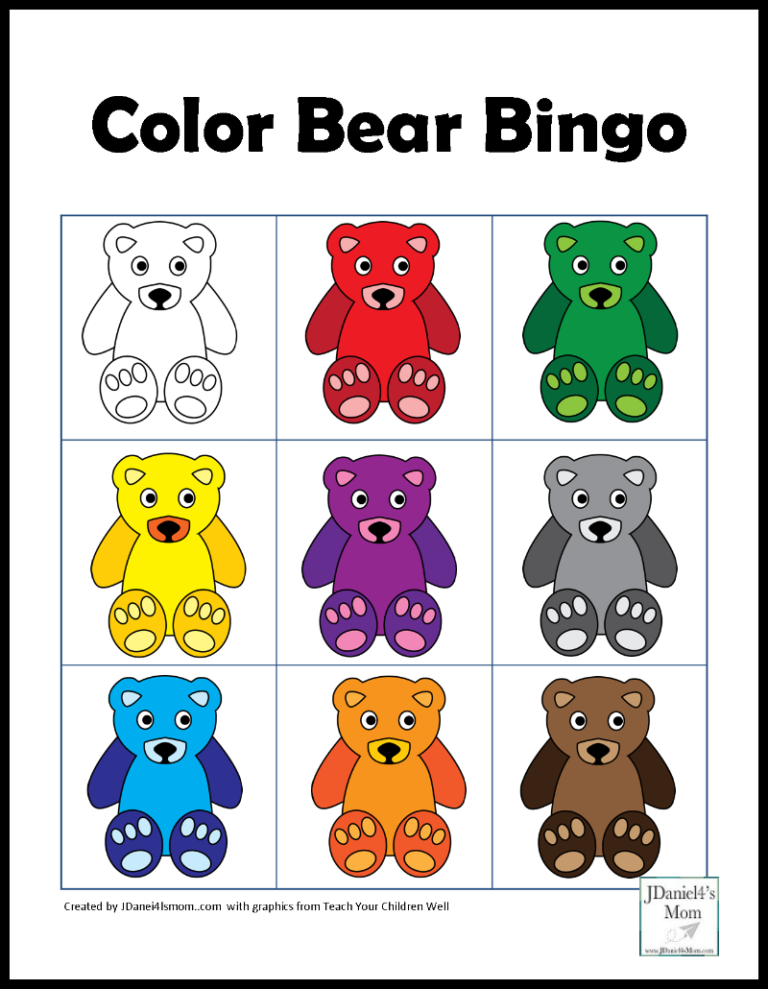 The first colors a child sees are yellow, orange, red, green. At this age, babies can already react differently to their toys of different colors (for example, a red rattle can please a child more than a blue one), look at bright pictures with enthusiasm. The baby's world quickly acquires colors, but if we talk about the ability to consciously find an object of the right color, then usually it appears in children at the age of one and a half. It is at this age that it is optimal to start learning colors in a playful way. You can voice the names of flowers to a child for up to a year, this will only benefit him. But do not demand too much from the baby, remember that his brain is actively developing, and as soon as the time comes, you will certainly see the results.
The first colors a child sees are yellow, orange, red, green. At this age, babies can already react differently to their toys of different colors (for example, a red rattle can please a child more than a blue one), look at bright pictures with enthusiasm. The baby's world quickly acquires colors, but if we talk about the ability to consciously find an object of the right color, then usually it appears in children at the age of one and a half. It is at this age that it is optimal to start learning colors in a playful way. You can voice the names of flowers to a child for up to a year, this will only benefit him. But do not demand too much from the baby, remember that his brain is actively developing, and as soon as the time comes, you will certainly see the results.
To see if your child is ready to learn colors by playing with building blocks, ask your child to point to a piece of the same color as yours. If the baby can find objects of the same color, then he is quite ready to memorize the names of colors.
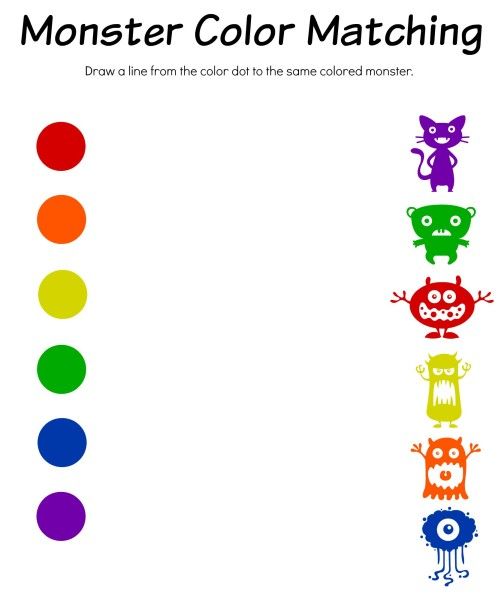
When should I start teaching colors?
By the first 2-3 months of life, a child begins to distinguish red. This is due to the fact that cones (special elements of the retina of the eye) that are sensitive to the long-wavelength part of the light spectrum are the first to start working.
At 1 year old, a baby can distinguish 3 simple colors - red, yellow, blue and 1 complex - green. However, it is still difficult to check what exactly a one-year-old peanut sees. In each case, everything depends on the development of speech and thinking.
You should actively start learning colors with a 1-year-old baby, but children can memorize and distinguish only from 2-3 years old, when an active cognitive interest appears.
Step-by-step work
Start with basic options like yellow and red, they are easier for the child. The following table shows the stages of the learning process by age.
| The age of the baby, years | Available Forms | Recommended duration, min | 1-1.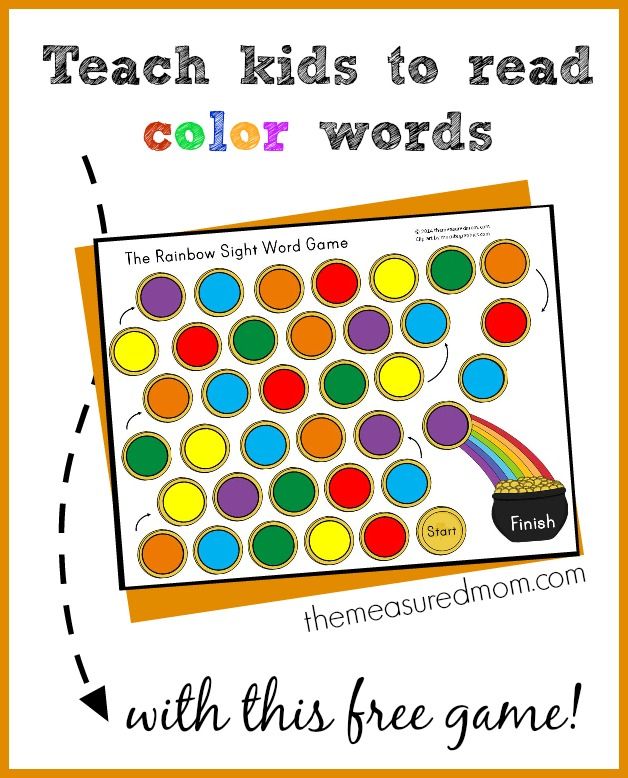 5 5 | MASS can not only be called the subject itself. You can hang a multi-colored bright rattle over the crib and repeat the color of its elements every day, touching them one by one. With seeming futility, this activity helps the child to gradually memorize his mother's words, so that later he can begin to use them. | 2-5 |
| 1.5-2 | The repetition of colors continues, and it is important to use active listening. So, mom can ask the baby to bring her a red ball. It will be useful to draw with finger paints or crayons, while the adult names what shade the kid uses for creativity. | Up to 10 |
| 2-3 | Spectrum learning enters the active stage. You can use Gyenesh blocks, invite the baby to classify objects by color, find something superfluous. | 10-20 |
| 3-4 | Exploring colors and their shades in a playful way. | 20-30 |
Each lesson should turn into a little holiday for the kid, so you can safely use games, turn on his favorite music. The main thing is that the child cannot be overworked, it is permissible to study for only two minutes, but several times a day - this will be much more productive than boring memorization and repeated repetition.
The main thing is that the child cannot be overworked, it is permissible to study for only two minutes, but several times a day - this will be much more productive than boring memorization and repeated repetition.
First acquaintance with color
First of all, the child must remember the primary colors: red, yellow, blue and green. It is necessary to teach the baby to distinguish colors consistently and gradually.
Red
Find red items
Look at the pictures with your child. Name them. Slowly find red items in the pictures. Then, together with the child, look for red objects around: at home, on the street. And only when the baby will clearly find and name objects of red color, you can move on to yellow.
Yellow color
Learning to distinguish red and yellow colors
Ask the child to show an object of a certain color in the pictures, for example: - Show a red pencil.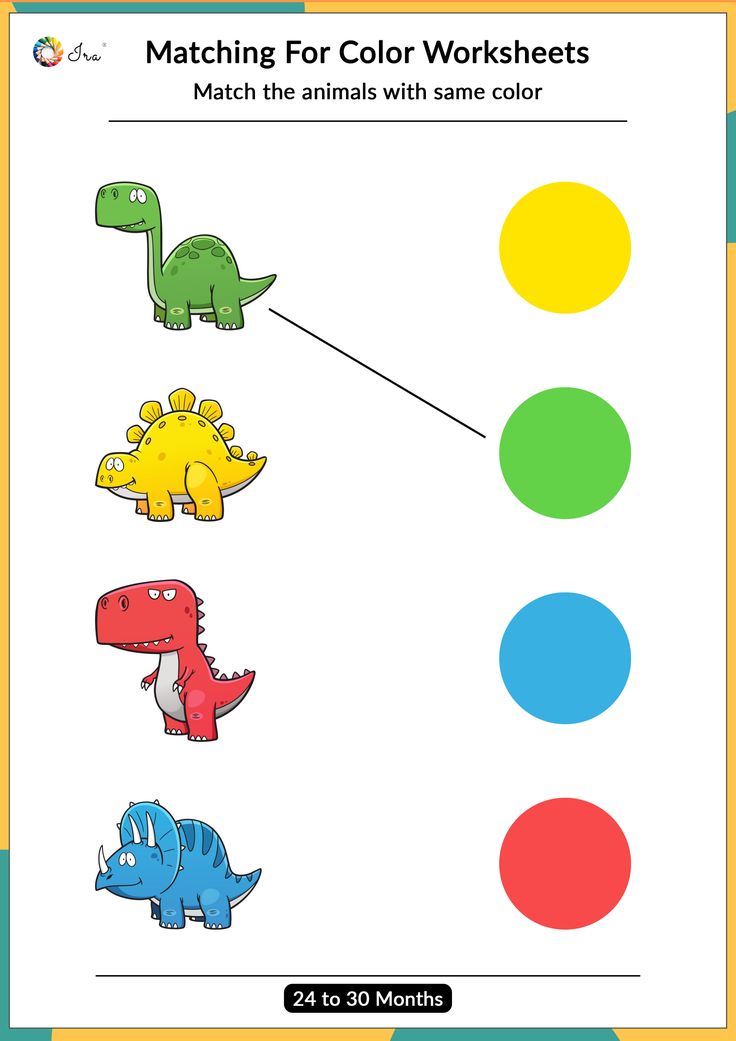 Now show the yellow pencil, etc. Explain to the baby why the chicken is drawn only in yellow.
Now show the yellow pencil, etc. Explain to the baby why the chicken is drawn only in yellow.
Green color
Learning to distinguish red, yellow and green colors
Ask the child: “Show me what is red in the picture? Find what's green. Choose what's yellow." Offer your child a more difficult version of the game. Pointing to the picture, ask: “What tomato? What is a pear? ”, Encouraging the child to pronounce the names of flowers.
Blue
Learning to distinguish between green and blue
Ask the child: “Show me what is blue. Find everything green.
Learning to distinguish red, yellow, green and blue colors
Ask the child: “Show me and say what is red. What is blue? What's green? What is yellow? Tell me what color the cube is. What color is the scoop?
Arrange in boxes
Look at the pictures with your baby. Ask to find red, green, blue and yellow boxes. Draw the child's attention to the objects in the frame. They need to be put away. Ask the kid: “Where do you think we will put the bow?” If the child shows correctly (red bow in a red box), take a pencil and connect the bow and box together with a line. If the task causes difficulty, show the baby a bow and ask: “Where is the same box?”
Ask to find red, green, blue and yellow boxes. Draw the child's attention to the objects in the frame. They need to be put away. Ask the kid: “Where do you think we will put the bow?” If the child shows correctly (red bow in a red box), take a pencil and connect the bow and box together with a line. If the task causes difficulty, show the baby a bow and ask: “Where is the same box?”
Pick clothes for the dolls
Say to the child, "Let's help the dolls get dressed." Draw the baby's attention to the doll with the red bow and ask: "What coat do you think this doll will wear?" Connect the doll and coat of the corresponding color with a pencil. Thus, "put on" coats, boots and hats for all dolls.
Please rate the material.
Learning colors in everyday life
Children get most of their knowledge about the world in everyday life: communicating with adults and peers, observing nature, playing. The study of flowers is no exception.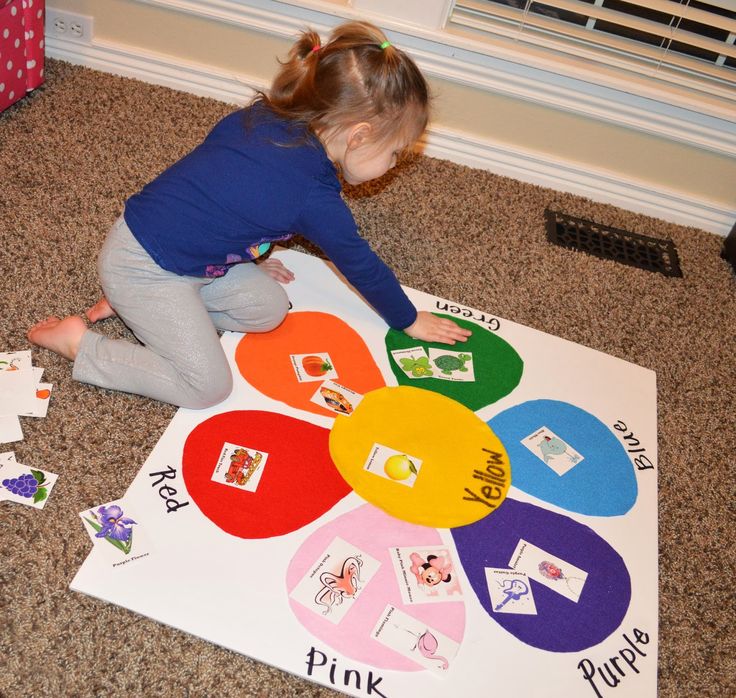 Sometimes a child does not need to do special exercises to learn to recognize colors. For this, it is enough that he hears the name of the color and associates it with a specific thing. During daily activities, voice for the child what color the objects are around. Whether you are drawing, playing with blocks, looking at cars in the yard, reading, swimming, eating, dressing - in each of these situations, you can gently teach your child to distinguish colors.
Sometimes a child does not need to do special exercises to learn to recognize colors. For this, it is enough that he hears the name of the color and associates it with a specific thing. During daily activities, voice for the child what color the objects are around. Whether you are drawing, playing with blocks, looking at cars in the yard, reading, swimming, eating, dressing - in each of these situations, you can gently teach your child to distinguish colors.
It is important that the study of colors does not turn into torture. You should not constantly test the child's knowledge by asking him which color is which. Soon the baby may just start to ignore you. “Let's paint the sun yellow!”, “What a delicious green cucumber!”, “Oh, where did the blue cube go? Here he is!" are examples of how you can subtly help your child remember colors.
Learn to Mix Colors Visual Cards
Pictures about colors with pictures
9000 9000
Games for studying colors and their shade
,000 the baby has an interest in learning colors, or in order to consolidate existing knowledge, you can invite the child to play special “color” games.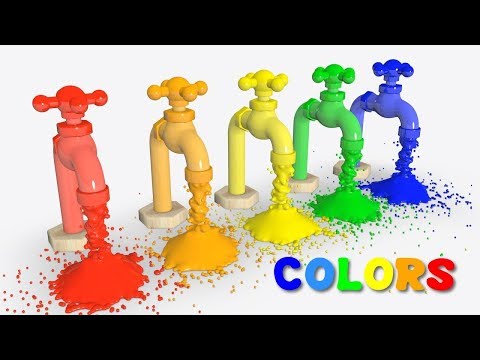
Learning colors puzzle cards
Print the puzzles, cut into 4 parts. Invite your child to assemble puzzles to make a rectangle of the same color.
First, the child is shown a red cube, the mother says: “Look, here is a red cube”, emphasizing the name of the color with her voice. “He is bright and beautiful, red tomatoes, apples, peppers.” Then the mother should give the cube to the baby so that he can properly study the color.
The next step is consolidation: mother and baby walk around the apartment and find all the red items (you can prepare in advance and spread them out). The next day, you can consider the cards on which the corresponding objects are depicted, everything is spoken out again. Such classes are repeated for several days (their exact number depends solely on the abilities of the child).
Finally, you should check how well the material is learned. Mom takes two multi-colored cubes and asks: “Show me the red cube, where is it?”. If the answer is correct, you should proceed to the study of the next color (blue) using a similar method. Then - yellow and green. But if the baby is still at a loss, do not rush him.
If the answer is correct, you should proceed to the study of the next color (blue) using a similar method. Then - yellow and green. But if the baby is still at a loss, do not rush him.
When the colors are learned, you need to reinforce the material. At 1.5-2 years old, you can offer your child fun games that will help him to correctly distinguish colors. For example, a mother draws in advance houses of different colors (basic) and "inhabitants" - the same shades of animals or men. The child must settle them. During work, you should comment: “That's right, we populate the yellow mouse in the yellow house” or “Why do we put the red man in the blue house? How should it be right?
The following exercises are also suitable for age.
- Distribution. Mom gives molds and buttons of different colors to the baby, the child must arrange the buttons into containers.
- Construction of towers from blocks. Only two colors are used, the adult asks the kid to build two towers from them so that each of them has its own color.
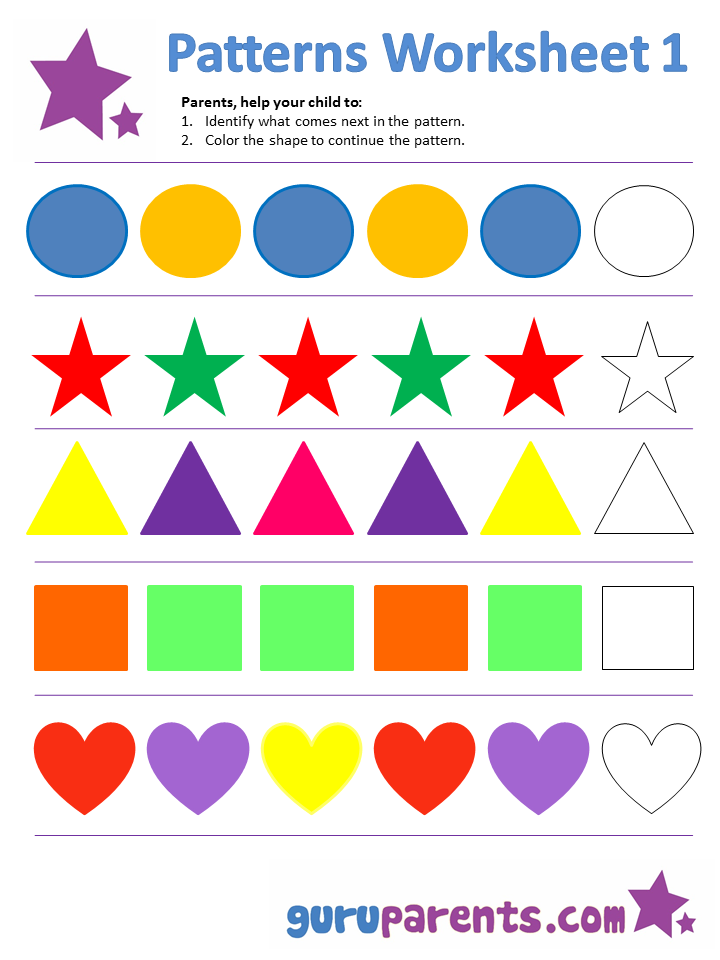
The main rule of success is daily, but not exhausting workouts, only in this case the names will be firmly deposited in the baby's brain. Work is currently underway with four primary colors - red, yellow, blue and green. Until they are assimilated properly, one cannot move on. But if the baby has already remembered them well, you can introduce him to new tones.
Activities with an older child
At 2-3 years old, you can offer your little one a solution to the simplest problems, during which he will learn colors with his mother. The following options are possible.
- The parent draws several cars, and the quality of the drawing does not really matter, the main thing is to paint them in different colors. After that, he gives the baby a set of cards or buttons, the color of which matches the color of each car. The task of the baby is to build “paths” for the cars so that they match the tone. The exercise also trains fine motor skills well and, accordingly, is useful for the development of speech.
- Building a train. The parent puts one cube of any tone that is already familiar to the baby, for example, blue. The task of the kid is to continue the train, finding all the cubes of exactly blue color.
- Collect the flower. Mom draws simple flowers with colored felt-tip pens (the middle and several large petals), then cuts them in half and mixes them. Then he asks the baby, having collected flowers, make a bouquet, name all the tones used.
These types of tasks help babies sort things correctly by determining whether they are red, yellow, green. During the game, the mother should definitely pronounce the names of the colors, ask the child to repeat - this contributes to memorization. If the child made a mistake, it is important to work it out: perhaps he simply did not understand the task or thought that “it would be more beautiful this way.” Explain again that it is necessary to use cubes (buttons, cards) of exactly one color you named.
Continue learning
Children are very fond of solving riddles, and this should be used to teach them to distinguish colors. In addition, this form of work develops thinking and memory, helps to increase the active vocabulary.
In addition, this form of work develops thinking and memory, helps to increase the active vocabulary.
You can offer the child the following riddle: “Here is a well done cucumber, it came to us from the garden, there are many of them. And what color is it? ”,“ And this is a mouse, a cute mouse. It is white, but more often ... What is it? The reading of the text should be accompanied by visualization, that is, show the baby a cucumber, a toy mouse.
Next, you can play the following fun games.
- Extra color. In front of the child, several (5-6 will be enough) objects of the same color and one “extra” object of a different color are laid out. The child's task is to find a mistake and tell why he thinks so. You can talk about success if the baby says: "Everything is red, but the ball is green." In a similar game, you can use Gyenesh blocks.
- Matching. Colored figures are used, which the parent mixes, while the child must understand all the diversity and put them in pairs, based on the color.

- "Traffic light". Suitable for fun with those children who already know a little about the names of colors. Mom pronounces the name, the baby must find it in his clothes, if he is, take a step forward, if absent, stay in place. You can add an element of active play to the fun - if the named tone was not in the outfit, the child will try to run across, and the mother will catch him.
Every free minute should be practiced, for example, during a walk, repeat to the child that a red car has passed, the grass is green, the flowers are yellow. Then ask him: what color is the grass? What else do you see green? This will help you remember quickly. It is important to remember that children's memory is very plastic, the baby is able to absorb a lot of information, so if any of the objects that interest him is lilac, you can also study this shade, you don’t need to “simplify the task” and call it purple.
Ways to learn colors with a child
Method #1.
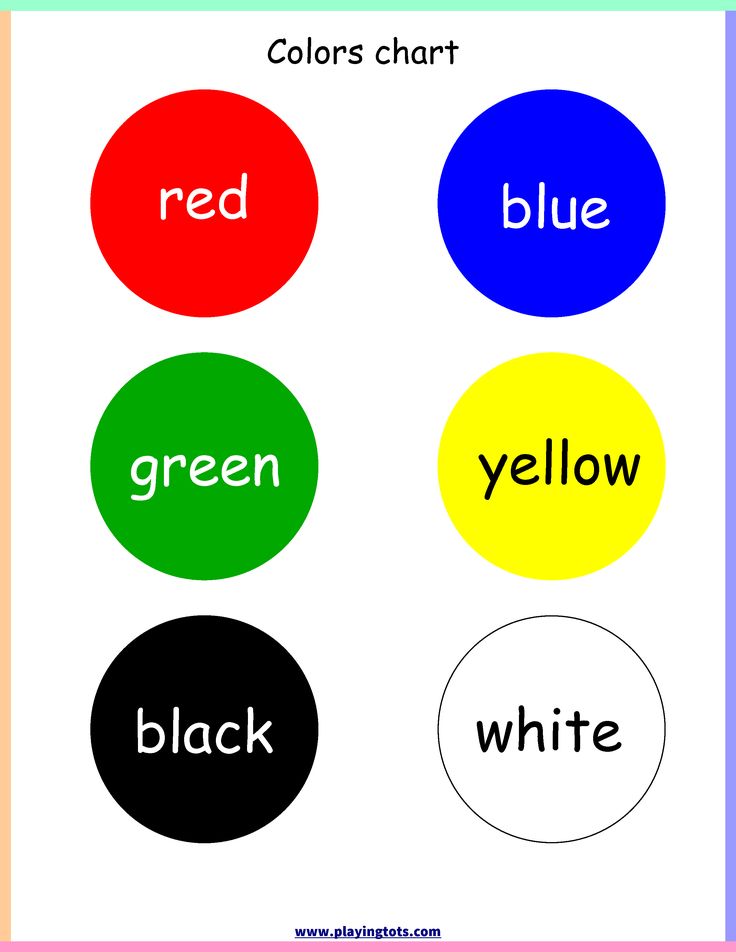 "Awakening Creativity"
"Awakening Creativity"
Learning to distinguish colors using paints, plasticine, felt-tip pens and pencils. You can start training in 1 - 2 years. The paint must be non-toxic and wash well.
For babies, freshly squeezed beet or berry juice can be used as a dye. It is safe, but stains from it are difficult to remove.
Initially, the parent will have to draw.
- say clearly and clearly what color you are drawing;
- let the child draw a couple of lines or completely paint over a sheet of paper;
- make sure that the child does not eat paints, markers or pencils;
- do not begin to learn the next color until the baby begins to confidently name the previous one.
Wax crayons should be used with caution as children often chew on them, scratch with their nails and try to put them in their ears or nose.
Method No. 2. “Finishing the picture”
The study of colors is passive.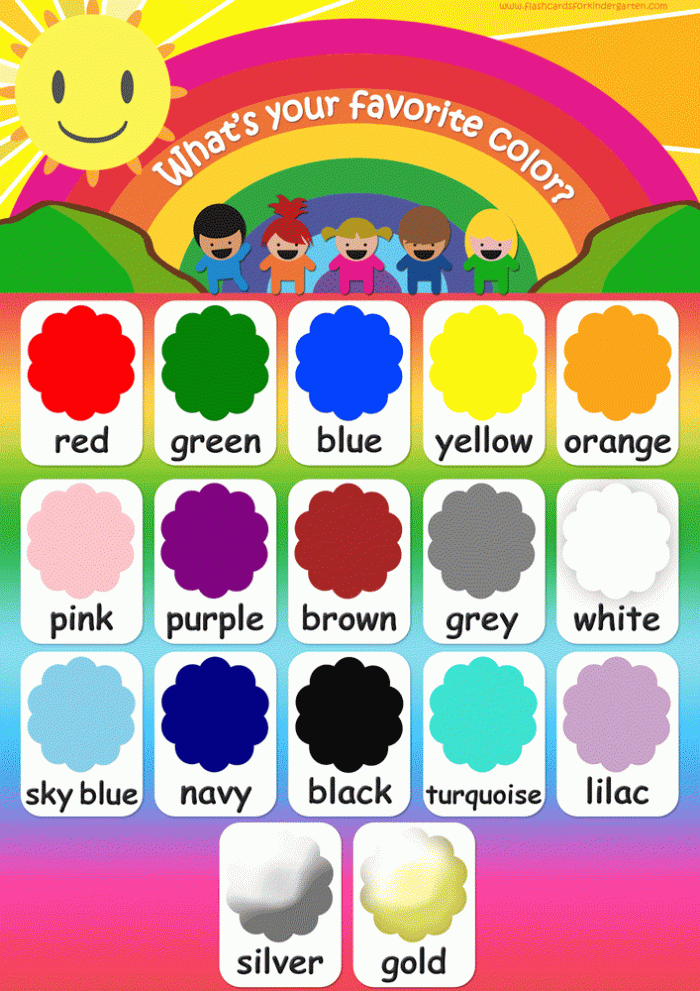 This method is used in children over 4 years old, as certain mental skills are required. It is necessary to draw a picture in which something is missing. For example, the sun - rays, a hare - an ear, a hedgehog - needles.
This method is used in children over 4 years old, as certain mental skills are required. It is necessary to draw a picture in which something is missing. For example, the sun - rays, a hare - an ear, a hedgehog - needles.
The child is offered some pencils. The essence of the task is for the kid to distinguish colors and choose the right one to complete the drawing. As you get older, the picture becomes more complex with more details.
Method No. 3. "Playing with an interactive toy"
A modern teaching method that allows parents not to worry too much. It will help to learn colors and check previously studied material. Combines everything with songs, poems and riddles.
Usually each toy has at least 1 light filter built in, the main purpose of which is to attract the child's attention.
Be sure to read the instructions carefully before use. Take an interest in the material from which the light filter and the toy itself are made.